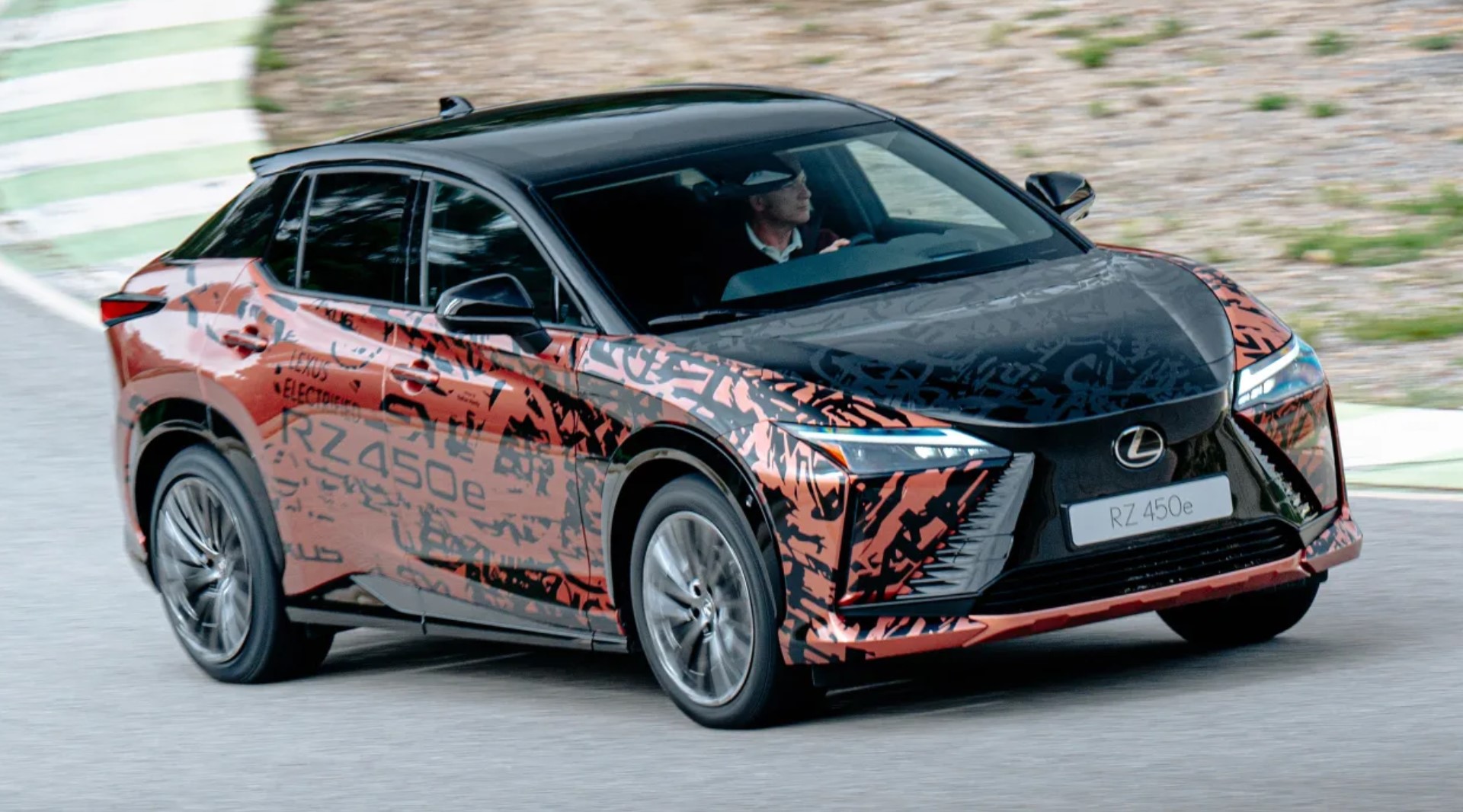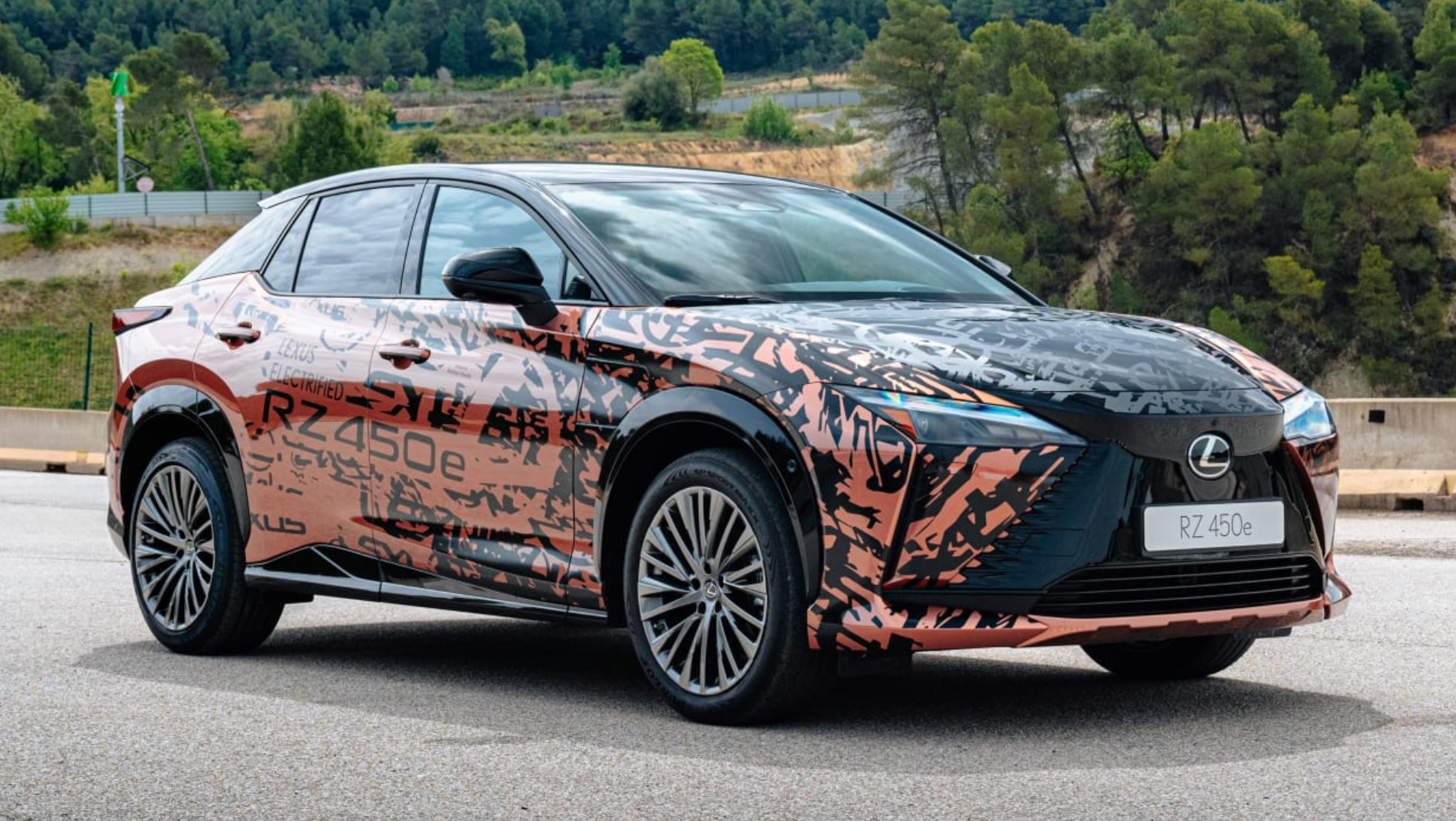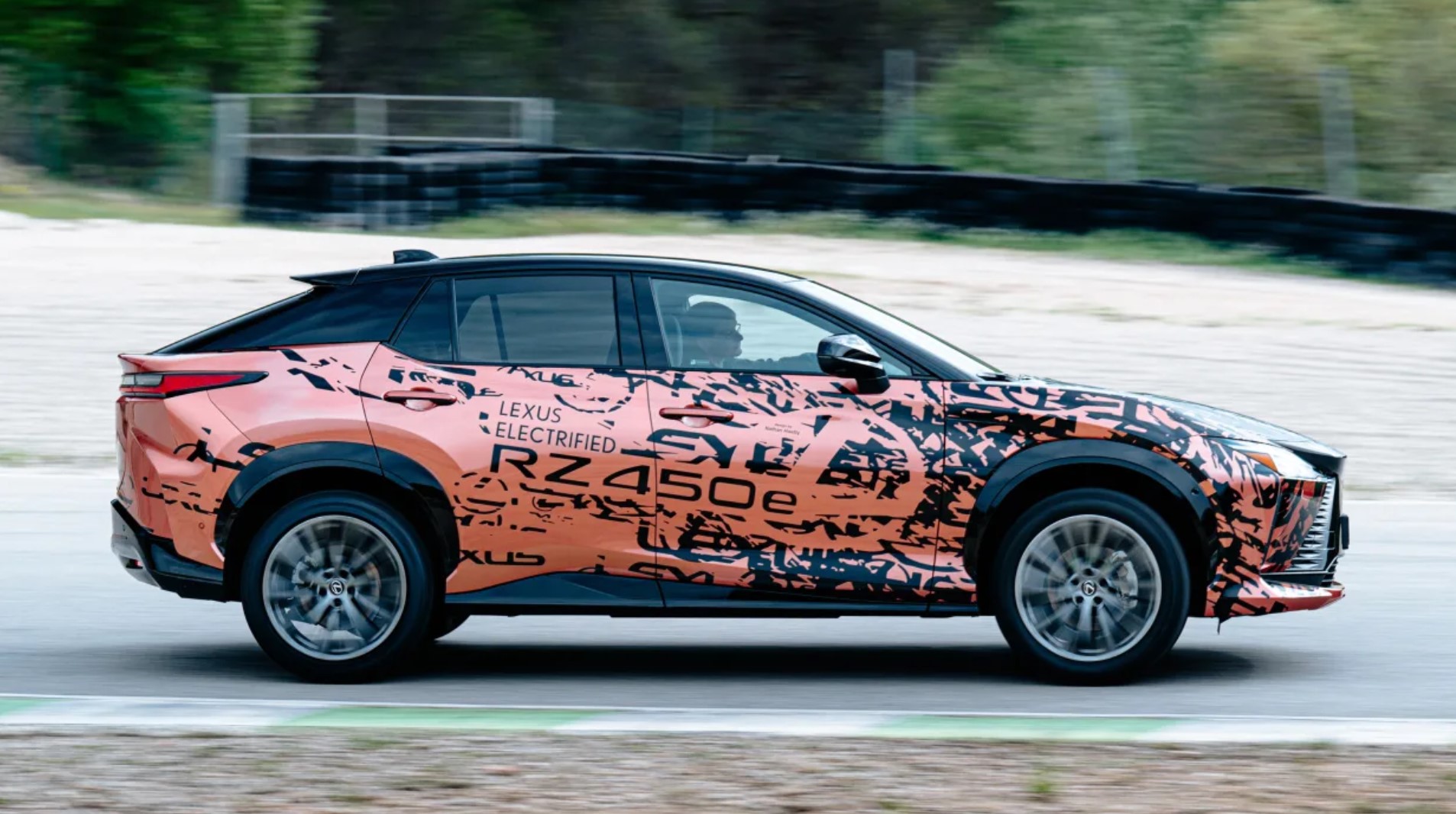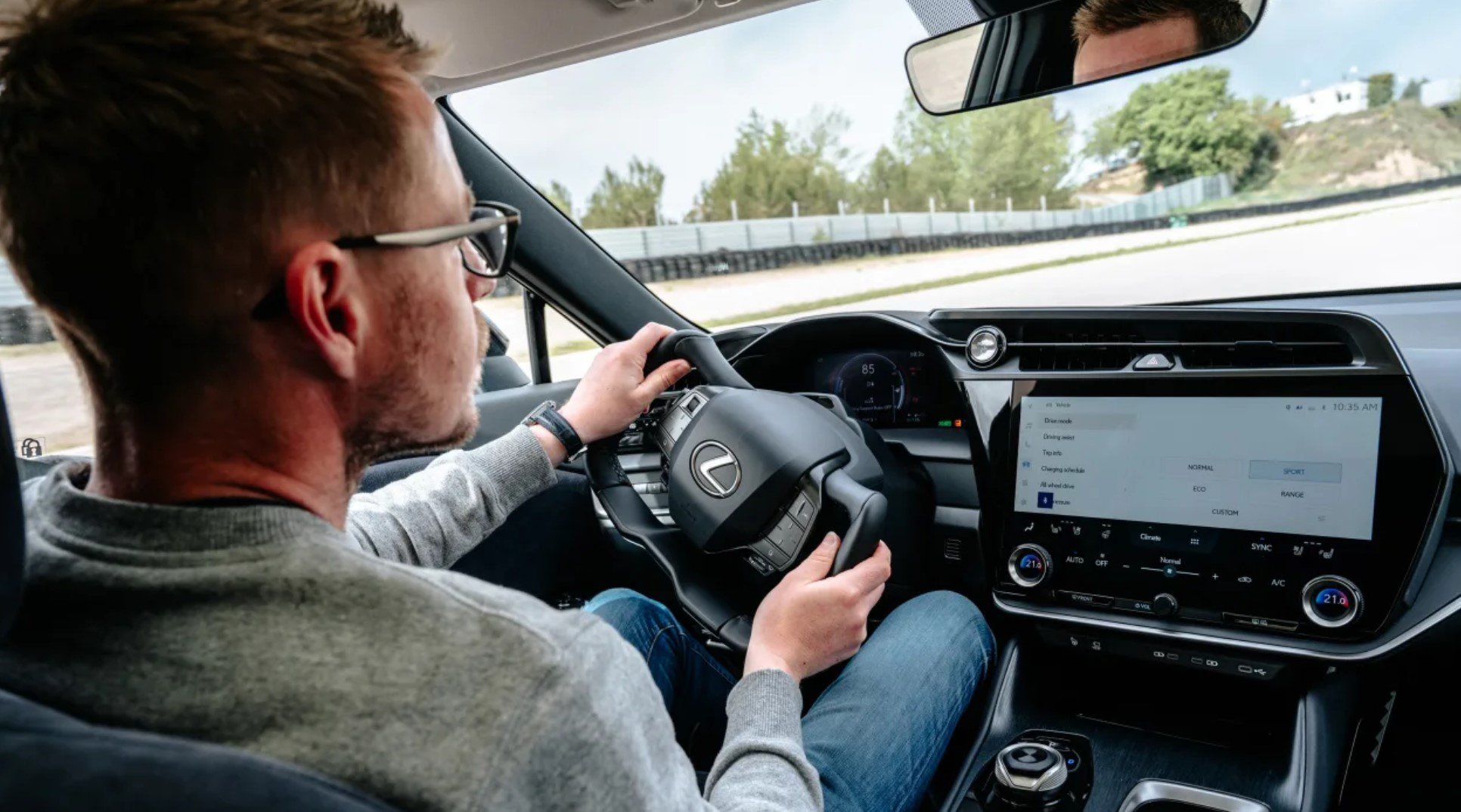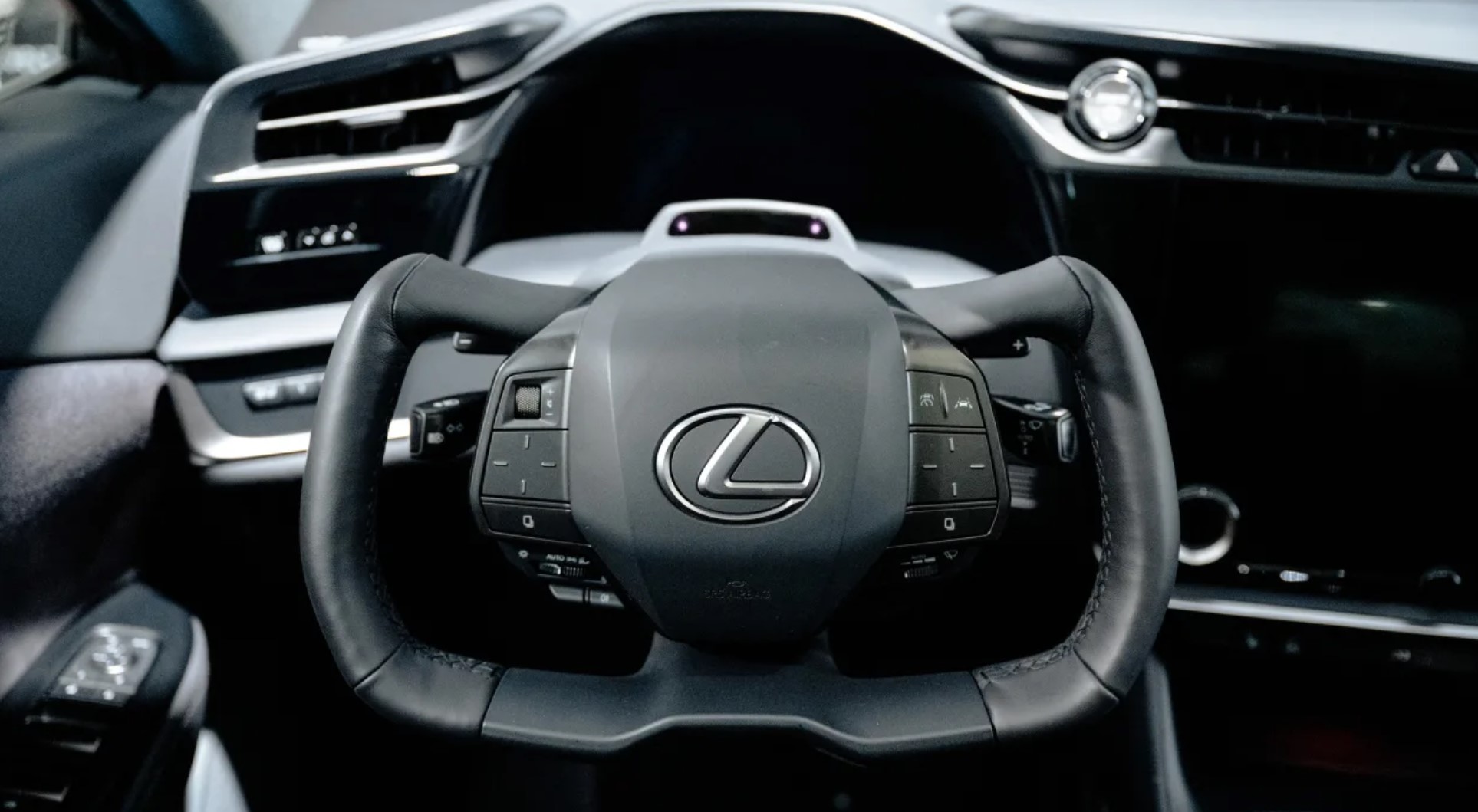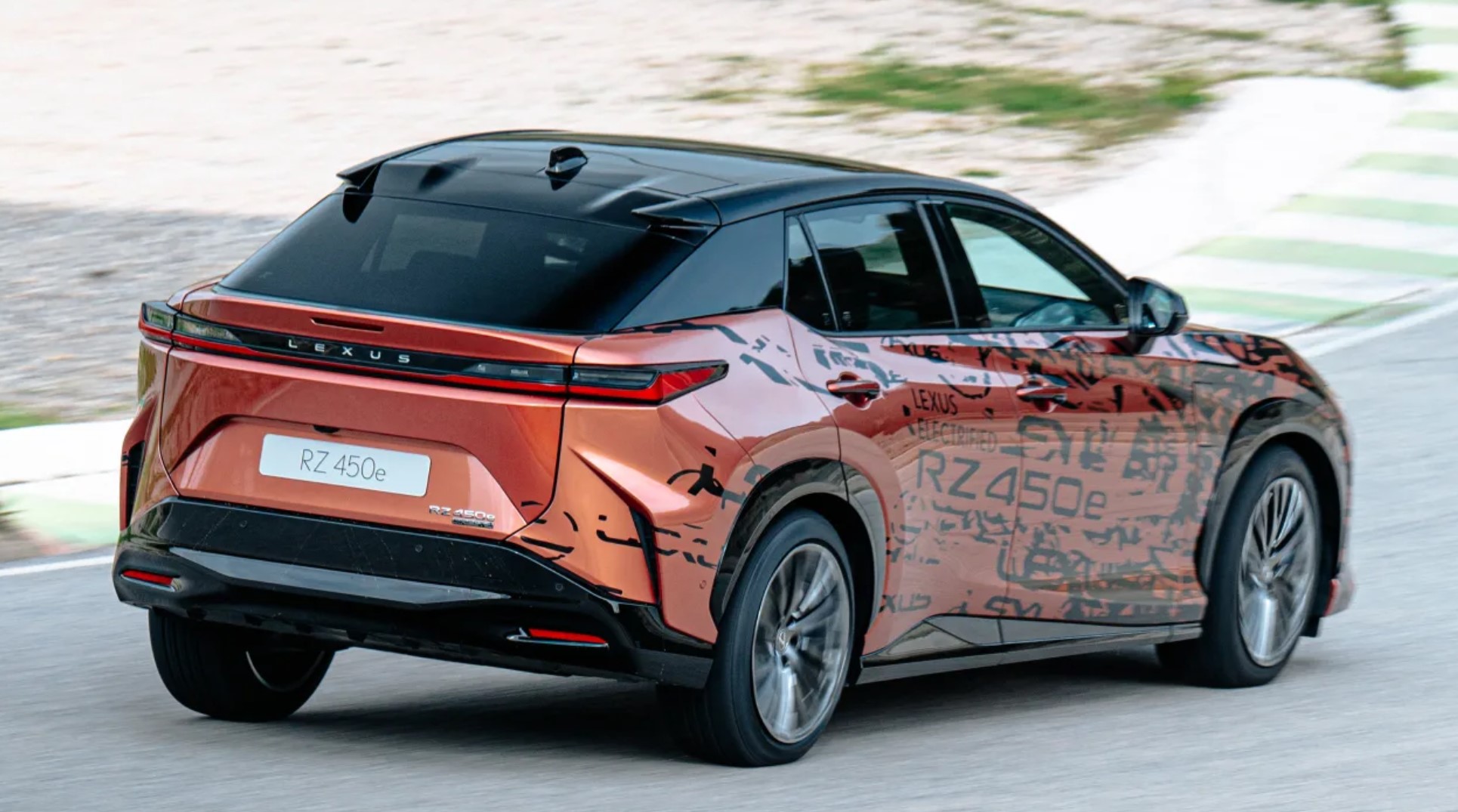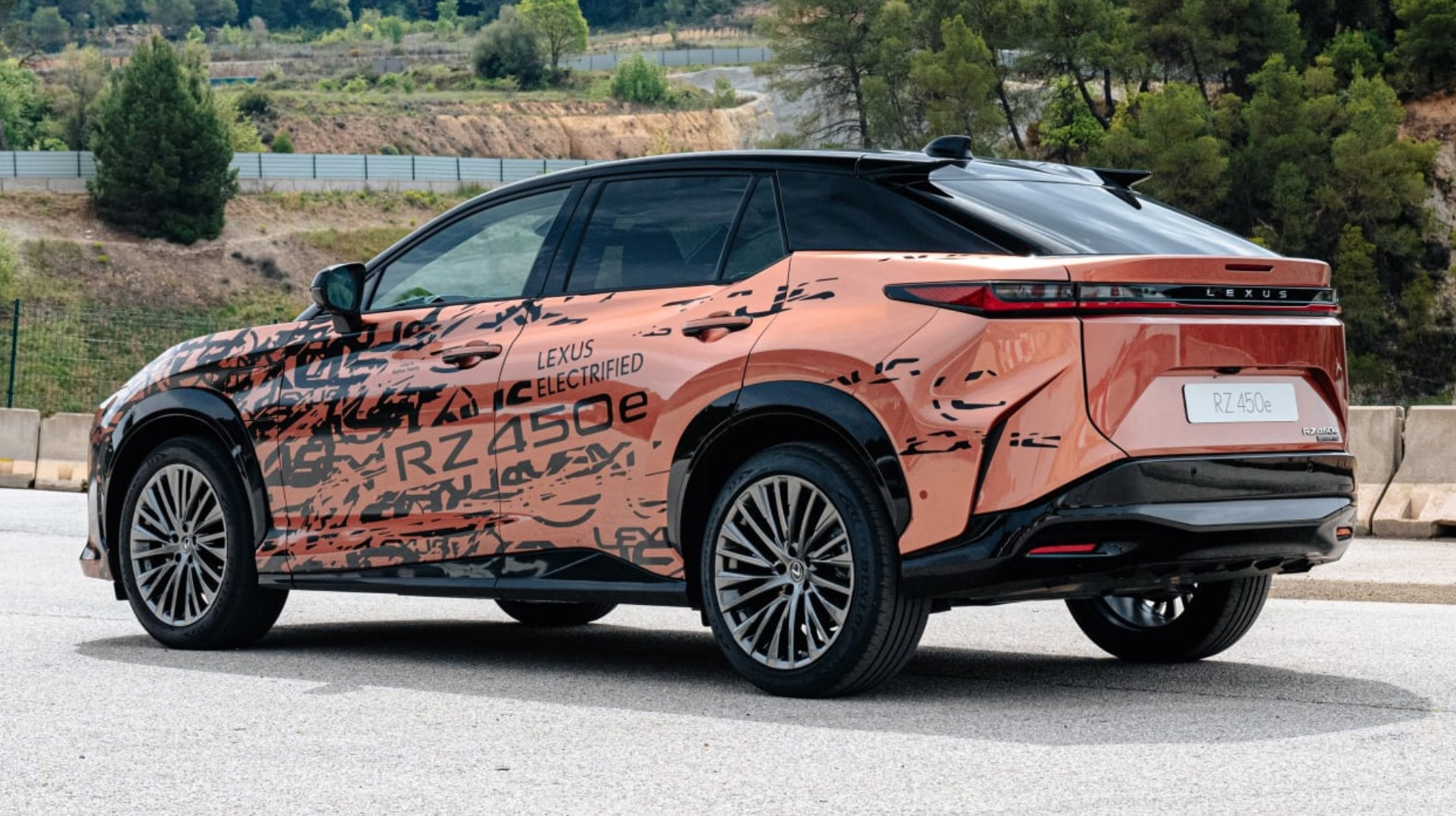We try out a prototype version of the new all-electric Lexus RZ 450e SUV which could be on its way to Australia soon.
Electrification is not a new concept in Lexus’s world. The Japanese brand is a hybrid pioneer, but up to now it hasn’t designed or engineered a bespoke electric car. That all changes with the RZ 450e.
This mid-size SUV is based on Lexus and Toyota’s e-TNGA architecture for electric vehicles that it shares with sister brand Toyota, the same platform that underpins the latter’s bZ4X SUV – itself Toyota’s first bespoke EV.
As a result, the RZ integrates the same 71.4kWh battery into its floor for a predicted range of more than 400km from a full charge. All fairly conventional so far.
From launch (Lexus Australia is yet to confirm the model locally), there will be no two-wheel-drive RZ, so this 450e denotes a dual-motor set-up, with the front-mounted motor offering 150kW and the rear drive unit 80kW for a total com bined output of 230kW.
Again, this type of tech is fairly conventional, but the RZ is wading into battle against all-electric rivals from Audi, BMW, Mercedes-Benz and Jaguar with a potentially game-changing system – and we’ve tried it.
This is where the RZ breaks with convention. If fitted with Lexus’s One Motion Grip set-up, the car comes with steer-by-wire technology meaning there is no physical connection between the steering wheel and the road wheels. Instead, sensors interpret the driver’s inputs and relay this electronically to a motor on the steering rack that turns the wheels.
As a result, there’s no need for a conventional steering wheel, so One Motion Grip-equipped models feature a butterfly-shaped steering yoke instead. The system can alter the speed of the steering, and a 150-degree turn of the yoke is enough to move the tyres from straight ahead to full lock, so you never need to cross your arms or take your hands off, according to Lexus.
The weight of the set-up was surprisingly heavy and felt meatier than the standard steering in the RZ. Response to your inputs is good and after a few corners it becomes relatively natural as the system is intuitive to use.
Our test was limited to a track session, so we couldn’t fully sample what feedback will be like on the road, but you do get a slight sense of what’s going on at the front wheels, just as with a conventional system in an SUV like this.
At low speed is where the tech really shows its worth, allowing you to change direction rapidly with little input at the wheel, making the car surprisingly manoeuvrable. The response rate is so quick that it’s easy to overdo it until you get used to how the system has been calibrated, which can cause some head toss in the cabin, but on the whole it’s easy to get to grips with.
We also tried a car with the standard steering set-up and while the weight was definitely lighter it also felt more cumbersome, requiring more effort and steering input for a similar result from the front axle. We think there is place for both set-ups in the line-up; Lexus is yet to outline how much the One Motion Grip set-up will cost however, simply saying it’ll offer “value for money.”
When it comes to performance, ride and refinement, both cars deliver the same experience. With a total of 435Nm of torque the RZ 450e will accelerate from 0-100km/h in 5.6 seconds, and the smooth surge of performance means it feels swift enough.
There are four brake regeneration modes to choose from, but we’d still like a stronger level of retardation in the highest setting as it doesn’t allow for full one-pedal driving. It’s actually a philosophy Lexus has chosen, according to the RZ’s chief engineer, Takashi Watanabe.
The RZ does really deliver when it comes to refinement, however. Lexus’s combustion-engined cars are among the smoothest and quietest on the road, but this EV takes things to another level. The brand routinely scores highly for refinement in our Driver Power satisfaction survey, and this looks set to continue in the EV era, even by this pre-production model’s standards.
Initial impressions suggest it’s matched by a chassis that offers a supple ride. You do sense some roll due to the mass, but the softer set-up points towards it being a comfortable car when we eventually get to try it on proper roads, which should make it easy to live with.
Charging will also be key to that, and while Lexus is yet to confirm final charging speeds, its bZ4X sibling uses the same tech and offers a maximum DC charge rate of 150kW, which means an 80 per cent top-up of its identically sized battery takes just under half an hour; competitors such as the Genesis GV60 offer more than double this charging speed.
Inside, even this pre-production car’s materials and build felt brilliant, while the RZ uses the brand’s latest infotainment tech.
There’s a low-set dash to help visibility and a 14-inch central touchscreen. It runs the Lexus Link multimedia system that made its debut on the NX, featuring Android Auto, Apple CarPlay, cloud-based sat-nav and a new ‘Hey Lexus’ voice control function. Over-the-air update compatibility means new features could be added in time, too.
That layout feels a step on for the brand, and the platform means there’s plenty of space in the rear (luggage space is to be confirmed but should be around 500 litres). There’s a great level of legroom and good headroom despite a new panoramic roof that features a clever coating to either reflect heat or keep it in (depending on the temperature) and photochromatic dimming tech. There are also ‘radiant heaters’ in the front that warm occupants’ legs. Both pieces of tech reduce load on the climate control and improve efficiency.
The Lexus RZ 450e is bringing some clever tech to the premium EV sector with its steer-by-wire system. It might not be to everyone’s taste, but then there’s a conventional option if it’s not for you. But the tech works well and gives the RZ character – something that’s lacking from a lot of EVs, so we say well done Lexus for trying something new.
Lexus RZ 450 e questions and answers
Are there any differences between the chassis of the conventional steering set-up and the steer-by-wire car?
No, the physical steering rack, the amount of steering lock, the suspension – they’re all the same. Even the steering ration at high speed is the same [for stability]. It’s just that the extra hardware and software calibration allows us to clever things with the steering ratio and the steering set-up’s map at different speeds.
Does this tech have a future in different models – such as a sports car?
Yes, yes, yes. We can programme and tune everything, the yaw rate, the amount of lock, the amount of steering angle, the steering ratios and how fast the ration changes – everything. We are looking into the possibilities of what can be done with the system.
With the level of friction in a conventional mechanical steering set-up is it actually easier to relay feedback through to the driver in the One Motion Grip set-up?
Yes, it actually is. We can more easily send these messages with our system, just as we do with an EPAS system. We can also be more precise when it comes to relaying the driver’s inputs, and choose what frequencies to tune out when it comes to feedback, giving the feel you want but not the kickback that you don’t.
The steering was heavier than we expected, is there scope to tune this for the final production version – or even have market-specific steering set-ups thanks to the flexibility the digital system brings?
Yes, we can tune the steering effort, but that bit of extra weight helps stop you steering too much and creating too sharp a reaction from the front end, so in some ways we feel we need that. In theory it would be possible to offer different set-ups for different markets and their requirements, but it’s not something we’re exploring at Lexus. We’re in the final stages of the system’s development, fine-tuning, and your feedback is helpful to us.
| Model: | Lexus RZ 450e |
| Price: | N/A |
| Battery/motor: | 71.4kWh/2x e-motors |
| Power/torque: | 230kW/435Nm |
| Transmission: | Single-speed automatic, four-wheel drive |
| 0-100km/h: | 5.6 seconds |
| Top speed: | 160km/h |
| Range: | Over 400km (est.) |
| Charging: | 150kW DC – 10-80% |
| On sale: | TBC |
Sean Carson




